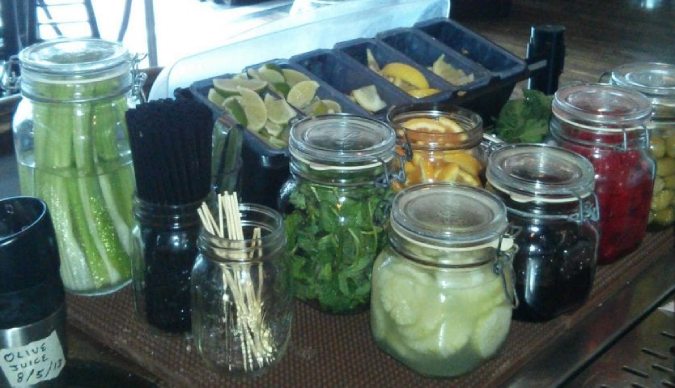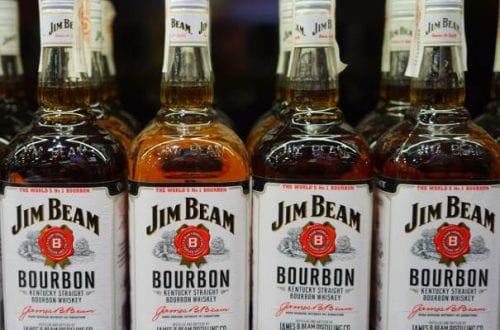
Garnishing Great Drinks
Garnishes are the most visible ingredient used in the drinks bartenders turn out. When possible, they should be procured and used for bar service the same day. As a matter of cost, you will have to store any unused fruit, vegetable, or herb garnishes overnight. A resealable container or one you can cover with a dampened paper napkin will work. The next day’s staff will have to check these leftovers for freshness and decide if they are fit to adorn that day’s drinks. Some garnishes, say citrus wedges, will be discarded more frequently than others such as olives.
Besides the general appearance or smell, there is the test of texture. Do the olives have cracks all about them or tend to crumble easily? Have the celery stalks become wilted? Are the lemon wedges withered looking and dry? If the answer is yes to any of these questions then the garnish should be discarded immediately. No matter the supply on hand at the time of service, do not allow bad garnishes to be used in any drink you prepare. It will put the establishment that employs you in a bad light, but reveal much more about the bartender serving such a drink. Let’s cover the most common garnishes found behind most any bar.
Citrus Wedges – Lemon, Lime, and Orange
Used in the Cuba Libre, Mimosa, Gimlet, Tom Collins and Margarita along with many others.
Cut length wise, you should get four wedges from each lime and six wedges from each lemon. Each wedge should produce about a quarter ounce of juice squeezed.
Citrus Twists – Lemon, Lime, and Orange
Used in the Sidecar, Cosmopolitan, Sazerac, Negroni, and Lemon Drop along with many others.
To add essential oil to any drink, cut away the fruit’s stem and stand it on its base. Cut the fruit’s zest into wide strips making sure to retain the white inner pith underneath. Longer strips are easier to handle. Just make sure you don’t cut into the fruit’s pulp center.
Maraschino Cherries
Used in the Old Fashioned, Manhattan, Whiskey Sour, and Appletini along with many others. These will be skewered and placed on the lip of the glass or dropped directly into the drink itself.
Celery
Used in the Bloody Mary, Bloody Bull, Bloody Caesar and any other upon request.
Stalks should be crisp and fresh. Keep them in a container with ice water on the bottom. Trim to fit glass and wash thoroughly before service begins.
Herbs
Used in the Mint Julep and Mojito along with many others. These can include rosemary, thyme, sage, cilantro or any other garden grown herb. Whichever is being supplied make sure it is kept in a container with ice water on the bottom.
Olives
Used in the Bloody Mary, Dirty Martini and upon request in any Martini.
Plain, pitted ones kept in a container of brine is the most common and safest way to go. Though they can be stuffed with an assortment of goodies such as nuts, cheese or bacon. Skewered in odd numbers only for any drink they adorn.
Onions
Used in the Gibson and upon request in any Martini or Bloody Mary.
Classic pearl onions packed in their own brine is the best way to keep them. Skewered in odd numbers only for any drink they adorn.
Others include: cinnamon sticks, cloves, vanilla beans, chocolate syrup and any other garnishes which can be employed for any number of drinks. They should be handled as they would be in your kitchen at home.
Now take this new knowledge of garnishes and dress your drinks in style!





